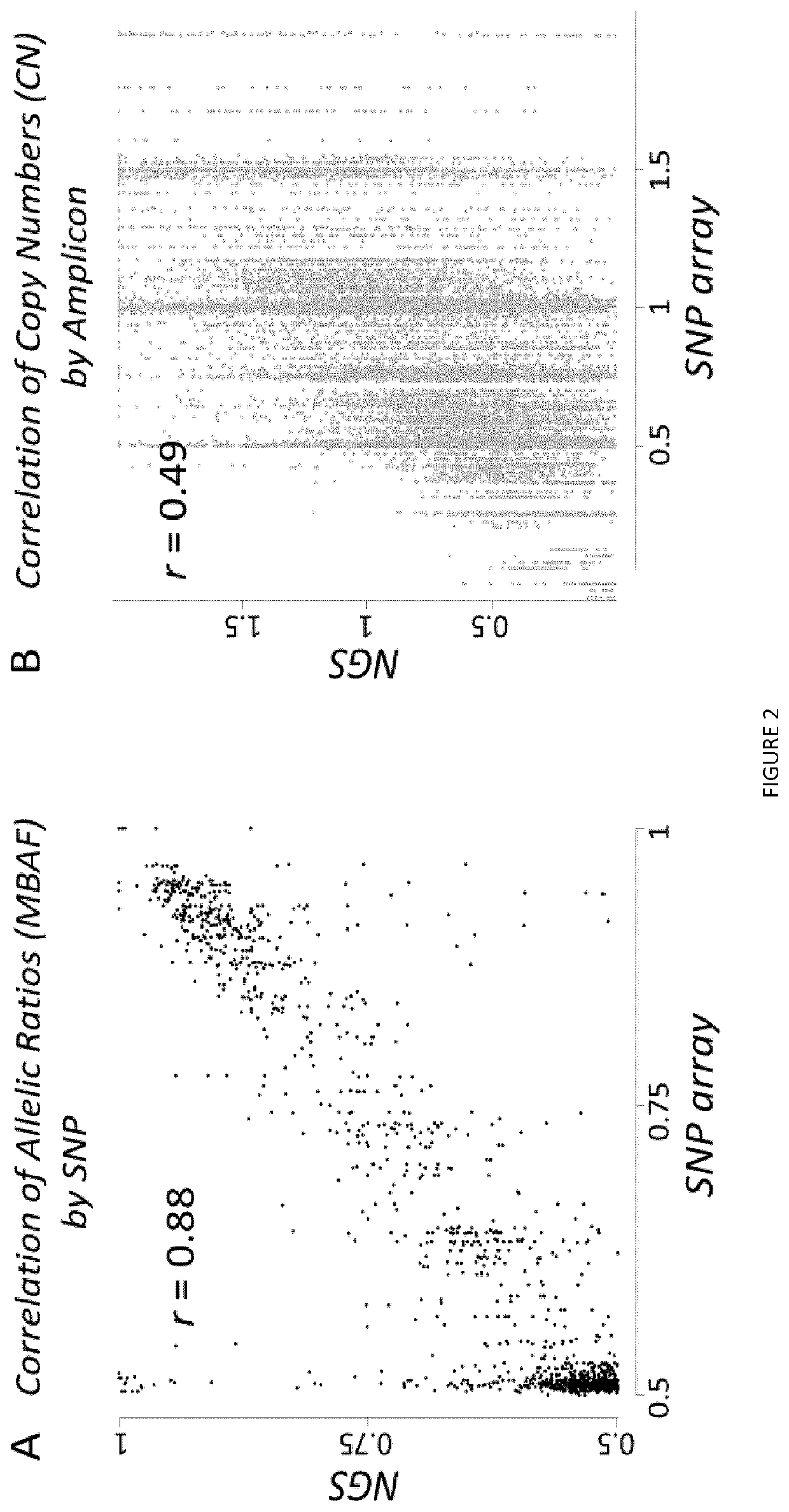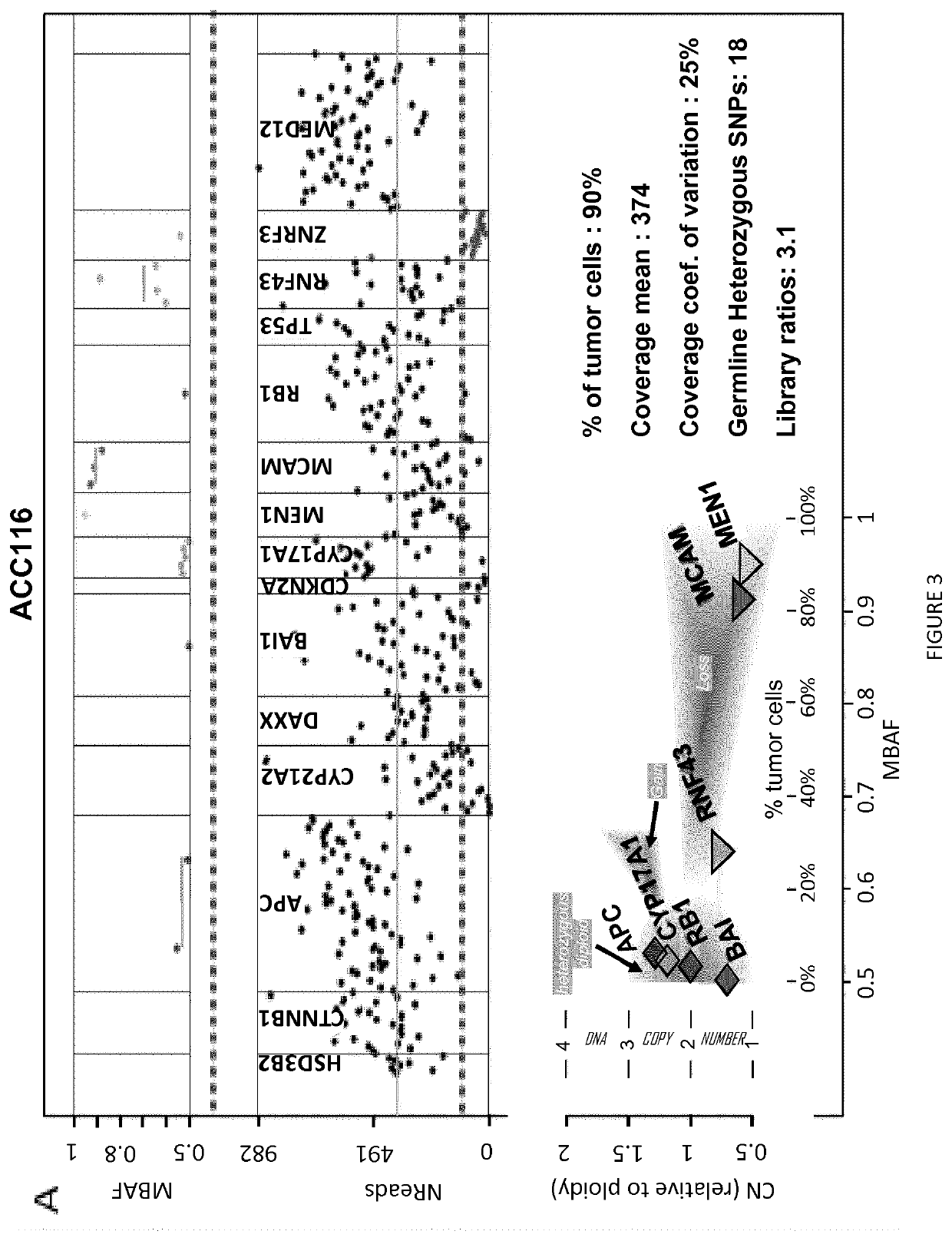Method for molecular typing of tumors in a single targeted next generation sequencing experiment
- Summary
- Abstract
- Description
- Claims
- Application Information
AI Technical Summary
Benefits of technology
Problems solved by technology
Method used
Image
Examples
example 1
Material and Methods
A—Samples
[0049]A training set of 109 adrenocortical carcinoma samples was analyzed, including 77 both sequenced by targeted NGS (tumor and leucocyte) and analyzed by SNP arrays (tumors), and 32 sequenced by NGS after bisulfite treatment, 6 / 32 were also analyzed by methylation array, and 20 / 32 were also analyzed by MS-MLPA (see below).
[0050]These tumors were snap frozen early after surgery, and kept in liquid nitrogen until use. DNA extraction was performed using standard protocols as previously described [37].
[0051]A validation set of 449 cancer samples, from 42 distinct cancer types was analyzed (Table 1), both sequenced by targeted NGS and analyzed by SNP array [50].
B—SNP and Methylation Arrays
[0052]In the training set, SNP array and methylation array experiments were performed using the Illumina HumanCore-12v1 and the Illumina Human Meth27 Beadchips respectively, following the manufacturer recommandations as previously described [38].
[0053]In the validation se...
example 2
Results
[0085]Informations Obtained from NGS Allelic Ratios and Read Counts Regarding Somatic Chromosomal Alterations
[0086]A chromosome loss can be detected either by a decreased DNA copy number (CN), or by loss of heterozygosity (LOH; FIG. 1). LOH is an extremum of allelic imbalance (AI), where one allele is completely lost [42] (FIG. 1). Using NGS, read counts for each amplicon should somehow reflect DNA CN. Similarly, for heterozygous SNPs, ratios of read counts measured for each allele, termed allelic ratios, should reflect AI. This was tested in a training set of 77 adrenocortical carcinoma tumors genotyped both by SNP array and NGS, using SNP array data as a gold standard (FIG. 1).
[0087]Indeed, using NGS and considering all heterozygous SNPs, allelic ratios globally were found as strongly correlated with AI measured by SNP array (Pearson r=0.88, p−12, FIG. 2A). Similarly, read counts of NGS amplicons also correlated with CN determined by SNP array. However compared with allelic...
PUM
| Property | Measurement | Unit |
|---|---|---|
| Fraction | aaaaa | aaaaa |
| Time | aaaaa | aaaaa |
| Ratio | aaaaa | aaaaa |
Abstract
Description
Claims
Application Information
 Login to View More
Login to View More - R&D
- Intellectual Property
- Life Sciences
- Materials
- Tech Scout
- Unparalleled Data Quality
- Higher Quality Content
- 60% Fewer Hallucinations
Browse by: Latest US Patents, China's latest patents, Technical Efficacy Thesaurus, Application Domain, Technology Topic, Popular Technical Reports.
© 2025 PatSnap. All rights reserved.Legal|Privacy policy|Modern Slavery Act Transparency Statement|Sitemap|About US| Contact US: help@patsnap.com



